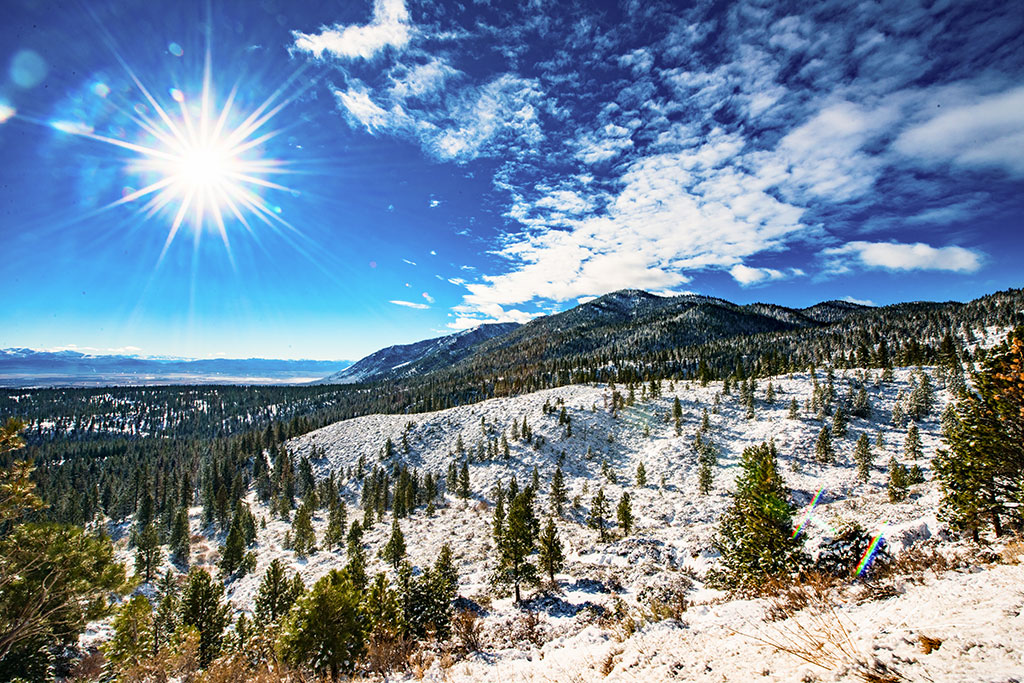How Trees React to Winter Extremes
Posted: February 19, 2016Source: American Forests
By Austa Somvichian-Clausen

Credit: Chuck Fazio,Artist-in-Residence.
In light of the recently dipping temperatures thanks to Winter Storm Jonas, have you ever thought about how certain trees are able to thrive in such extreme cold? While you’re cozying up on the couch this evening with a piping mug of hot chocolate, take a minute to read about the amazing processes trees go through to keep warm through the winter months.
What Happens When It Gets Cold?
Some trees are able to survive down to the temperatures of liquid nitrogen, or -196° C/-320° F! That leads to the question of: how? Trees go dormant in the winter and will acclimate in order to prevent death by ice crystals. See, living things can’t necessarily die from just temperature alone. What is really deadly is when water freezes inside of the cell. When water freezes, its molecules reorient themselves into expanded, geometric shapes that can then rip through the walls of the tree’s cells.
How Do They Do It?
As the days get shorter and temperatures start dropping, a chemical chain reaction occurs, telling the tree that it is time to stop growing in anticipation for winter. These hormones cause leaves to fall, growth to stop, stomata to close, sap to stop flowing, as well as causing physical changes to trees’ cells to allow them to withstand freezing temperatures. During the cell’s physical change, the plasma membrane becomes more flexible, and sometimes even permeable, and sometimes water molecules are swapped out with sugar molecules. Since the plasma membrane now has increased flexibility, it is better equipped to handle the pointiness of frozen water molecules if they happen to puncture through the cell wall. During acclimation, major changes are also happening to the contents of the cell itself. The large vacuole, which usually consists of mostly water, are replaced by smaller compartments of increasingly freeze-resistant starch, proteins and fats.
Super Trees
The last step is one that only certain trees sometimes take to survive through the harsh chill of winter. When temperatures are cold enough, we’re talking like -26° C, certain forms of sugar that fill up the cytoplasmic solution as a reaction to the cold can help water vitrify. Vitrification is a physical state of water that occurs when it freezes, but its cells don’t expand and realign — which leaves the plant cell in an unharmed state of suspended animation. This is how trees at the most extreme global latitudes attempt to handle the deep chill.
Blankets vs. Bark
As you can see, trees have it pretty rough in the winter, but luckily they have developed some pretty unique and interesting adaptations to help them make it until the warmth of spring arrives. Learning about all that trees have to go through every winter makes us appreciate our fireplaces and fuzzy blankets even more! Although the worst of Storm Jonas is over, make sure to layer it on before going outside, and look out for slippery ice on sidewalks. Maybe while you’re on your daily commute, also take a minute to check out the trees in your neighborhood and find out even more about their individual adaptations!

